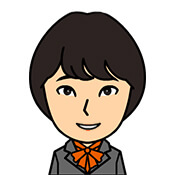
There are two types of modifiers in Korean: those using verbs and those using adjectives.
Let’s practice changing verbs to -ㄴ/은 this time.
The verb modifier “ㄴ/은”.
Modifiers of the past.
When you want to add past meanings to nouns, change the verb form to -ㄴ/은.
The verb modifier “ㄴ/은”.
저는 한국어 책을 읽었어요.
I read the Korean book.
↓↓↓
제가 읽은 책은 한국어 책이에요.
What I read is a Korean book.
When the verb is -ㄴ/은, the position also comes before the noun.
How to use “ㄴ/은” of the verb.
The presence or absence of a stem patchum is also important when using verbs as modifiers.
Av + -ㄴ/은
보다 + -ㄴ/은 = 본
만나다 + -ㄴ/은 = 만난
공부하다 + -ㄴ/은 = 공부한
먹다 + -ㄴ/은 = 먹은
찍다 + -ㄴ/은 = 찍은
열다 + -ㄴ/은 = 연
듣다 + -ㄴ/은 = 들은
돕다 + -ㄴ/은 = 도운
No patchum in the stem

I met this person when I traveled to Japan.
(만나다)

England is the country of my birth.
(태어나다)

The person I just called is a colleague of mine at work.
(통화하다)
Have a patchum in the stem

That’s a picture I took when I was in Jeolla Province.
(찍다)

Boiled chicken is a good diet food.
(삶다)

This is a letter my grandfather received from a friend during WWII.
(받다)
When the stem has no patchum, use -ㄴ, and when it does, use -은.
Cases of irregular changes.
ㄹpatchum

Not many cafeterias are open during the off-season
(열다)
The ㄹ of the patchum will drop out and -ㄴ will enter.
Part of ㄷpatchum

This is the music that women in their 20s listened to the most.
(듣다)
Some ㄷpatchum vocabulary uses -은 after ㄷ changes to ㄹ.
Part of ㅂpatchum

At the time of the Korean War, 63 countries helped Korea.
(돕다)
The ㅂ of the patchum replaces the 우, and the -ㄴ enters there.
What to watch out for with the verb “-ㄴ/은” and its application.
Difference from the adjective “-ㄴ/은”.
The -ㄴ/은 verbs and adjectives are easy to confuse because they are apparently used in the same way.
Verb “-ㄴ/은”

This is an outfit I bought last year when I went on vacation.
Adjective “-ㄴ/은”

They sell a lot of very cheap clothes there.
The verb -ㄴ/은 relates to an action, whereas the adjective implies its characteristics.
Note that although the shapes are similar, the meanings are quite different.
Let’s use it in combination with various nouns.
Use -ㄴ/은 in combination with various nouns.

It’s a place where I used to hang out with friends.

Taiwan was the first place I traveled to by myself.

The typhoon hit, but fortunately no place was damaged.
For example, when combined with 곳, which denotes a place, the nuance becomes “a place where an action was taken or something was done.
If you connect sentences, there is no limit to the number of ways you can express yourself.
Modifiers such as -ㄴ/은 can be added before and after various expressions to expand the range of expression at once.

The drinks we had at the pub yesterday were beer and sojoo.

I lived there as a child, but I don’t remember it.

The mackerel I bought at a nearby mart is so delicious that I want to recommend it to my friends.
The longer the sentence, the more difficult it will be, but it will also improve your ability to express yourself.
If you find yourself confusing ㄴ/은 with adjectives, compare the verb and the adjective carefully.
